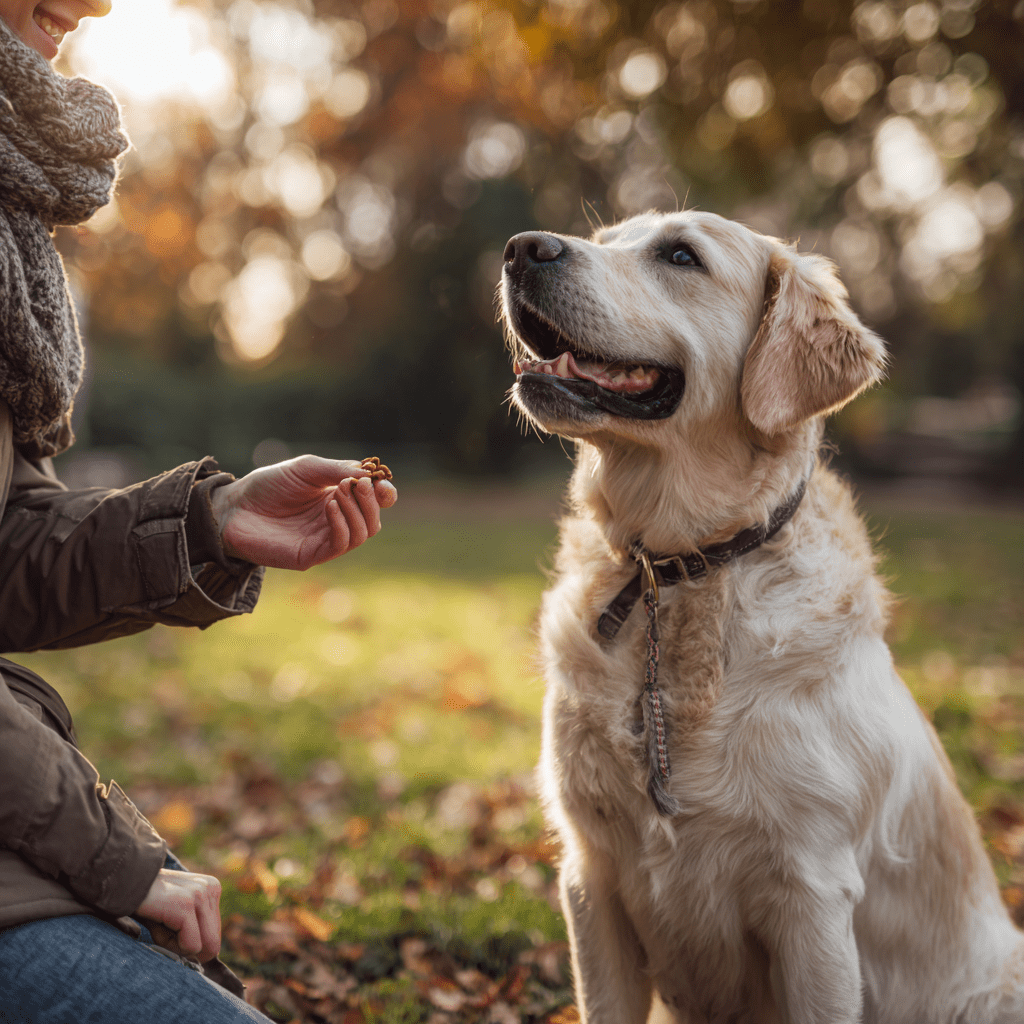Introduction: Why Positive Reinforcement Works
Training is at the heart of a happy relationship with your dog, but the method you use makes all the difference. While old-fashioned approaches relied on dominance and punishment, modern science proves that positive reinforcement is the most effective and humane way to train dogs.
Instead of scaring your dog into compliance, you motivate them with rewards—making training fun, safe, and trust-building. In this blog, we’ll explore the top 5 positive reinforcement techniques every dog owner should know and how to apply them in daily life.
What is Positive Reinforcement?
Positive reinforcement means rewarding your dog for the behaviors you want to encourage. Dogs repeat actions that bring them good outcomes—so if sitting politely gets them a treat, they’ll sit more often.
Reinforcement can take many forms: food, praise, toys, or even playtime. The key is consistency, timing, and choosing a reward your dog values.
Technique 1: Treat Rewards
Why it Works
Dogs are naturally food-motivated, making treats one of the most powerful tools in training. When used correctly, treats help your dog quickly understand new commands.
How to Use Treats Effectively
- Choose high-value treats: Small, soft, and tasty—like bits of chicken or cheese.
- Reward immediately: Timing matters. Give the treat the moment your dog performs the desired behavior.
- Keep them small: Training sessions should use pea-sized rewards to avoid overfeeding.
- Phase out gradually: Over time, replace treats with praise or toys to prevent dependency.
Example in Action
When teaching “sit,” reward your dog the instant their bottom hits the floor. With repetition, they’ll learn that sitting brings rewards.
Technique 2: Verbal Praise
Why it Works
Dogs love hearing approval from their humans. Tone of voice communicates emotion, and enthusiastic praise reinforces positive behavior.
How to Use Praise Effectively
- Use a happy, upbeat tone.
- Pair praise with treats or toys to strengthen the association.
- Be specific—say “Good sit!” instead of just “Good dog.”
Example in Action
When your dog comes to you on command, kneel down, smile, and say “Yes, good come!” This reinforces not only the action but the joy of pleasing you.
Technique 3: Clicker Training

Why it Works
Clicker training uses a small device that makes a “click” sound to mark the exact behavior you want. The sound becomes a signal that a reward is coming, allowing for precise timing.
How to Use Clicker Training
- Charge the clicker: Click, then give a treat. Repeat until your dog associates the sound with rewards.
- Mark behaviors: Click the moment your dog performs the desired action.
- Follow with a treat: Always reward after the click.
Benefits
- Clear communication.
- Faster learning.
- Builds focus and engagement.
Example in Action
When teaching “down,” click as soon as your dog’s elbows touch the floor, then reward. The click precisely marks the behavior you want.
Technique 4: Play and Toys
Why it Works
Not all dogs are food-motivated. For some, toys or playtime are the ultimate rewards. Using play taps into their natural drive for fun and bonding.
How to Use Play Effectively
- Use tug-of-war, fetch, or a favorite toy as a reward after correct behavior.
- Keep play sessions short to maintain focus.
- Only allow the toy during training to make it more valuable.
Example in Action
When practicing recall, reward your dog with a quick game of fetch instead of a treat. They’ll associate coming when called with fun and excitement.
Technique 5: Life Rewards
Why it Works
Not all rewards have to be food or toys. Everyday privileges—like going for a walk, being let outside, or getting on the couch—can serve as reinforcement.
How to Use Life Rewards
- Ask for a behavior before giving access (e.g., “sit” before opening the door).
- Be consistent—don’t reward pushy behavior.
- Use daily routines as opportunities for training.
Example in Action
If your dog loves walks, make them sit calmly before clipping on the leash. Walking then becomes the reward for good behavior.
Combining Reinforcement Techniques
The most successful training programs use a mix of rewards. Some situations call for treats, while others are better suited to play or life rewards. By varying reinforcement, you keep training engaging and prevent boredom.
Common Mistakes to Avoid
- Using punishment: Yelling or hitting breaks trust and doesn’t teach the desired behavior.
- Poor timing: Rewarding too late confuses your dog.
- Overfeeding: Balance treat training with portion control.
- Inconsistency: Everyone in the household must use the same cues and rewards.
Real-Life Story: Max’s Transformation
Max, a young Labrador, had trouble walking calmly on a leash. His owner used positive reinforcement with treats and praise for staying by her side. Within weeks, Max went from pulling constantly to walking politely. By adding playtime as a bonus reward after walks, his training became not just effective but enjoyable.
The Emotional Benefit of Positive Reinforcement
Beyond obedience, positive reinforcement deepens the bond between you and your dog. Instead of fear or dominance, your relationship is built on trust, fun, and communication. Training becomes less about control and more about teamwork.
Conclusion: Train with Kindness, Reap the Rewards
Positive reinforcement isn’t just a training technique—it’s a philosophy. By rewarding good behavior, you motivate your dog to learn while strengthening your connection.
From treats and praise to play and life rewards, the possibilities are endless. With patience, consistency, and love, your dog will thrive—not just as a well-behaved pet but as a happy, confident companion.
So, grab the treats, clicker, or favorite toy, and start training the positive way. Your dog will thank you with wagging tails, eager eyes, and a bond that lasts a lifetime.
